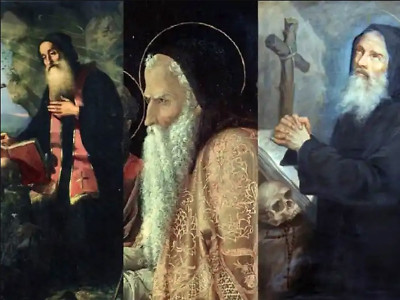Three hoods
 Tlet Alousset, Three hoods
Tlet Alousset, Three hoods
Farmers and fishermen in Lebanon have always relied on nature to forecast the weather. All they had to do was observe the sky, its color, the shape of the clouds, the arrangement of the stars, the cycle of the moon, and even the flight of birds or the behavior of certain animals or insects, to determine the weather. These ancestral weather forecasting methods are not entirely a thing of the past, as elders in rural and maritime areas still retain this knowledge despite the fact that climate change is likely to challenge their beliefs.
The calendar also plays a significant role in weather forecasting. January and February are the most dreaded months when it comes to bad weather, especially in the villages situated in the high mountains and inland plains. A multitude of popular beliefs and proverbs describe this winter period.
The “Tradition of the Three Hoods,” known as Tlet Allousset, has its origins in Christian monastic customs, particularly those of the Maronites. It announces three major snowfalls between January and February, coinciding with the commemoration of prominent saints in the history of the Church: Saint Anthony the Great, the father of monastic life, on January 17; Saint Ephrem the Syrian, a saint and doctor of the Catholic Church, on January 28; and Saint Maron, founder of the Maronite Church, on February 9.
During this period, the saints are compared based on the amount of snowfall on each of their respective feast days. After Saint Maron’s Day, an evaluation takes place to determine which of the three saints has brought the most snow. Believers will mention which saint outperformed the other two. In colloquial Arabic, they say “bayyada Mar…” (literal translation: Saint such-and-such whitened it). This expression, derived from the verb “to whiten,” refers to the whiteness of snow. In common usage, this expression means “doing something perfectly”. Thus, these saints are invoked not for their virtues but for the expected amount of snowfall on their feast days. Indeed, despite the cold it brings, snowfall has always been perceived as a grace sent by God, nourishing the natural springs within the earth.

